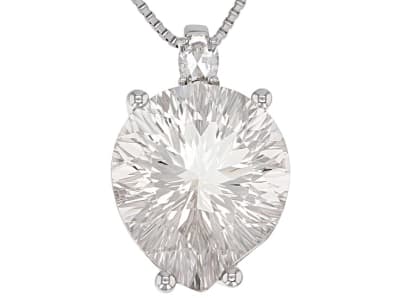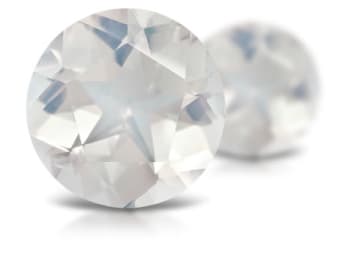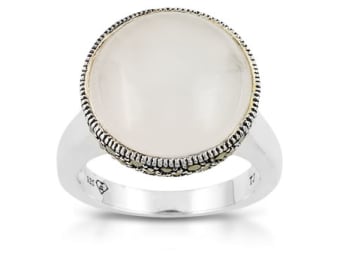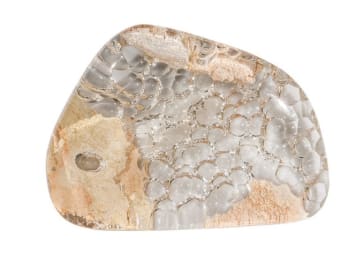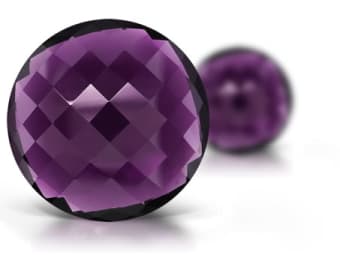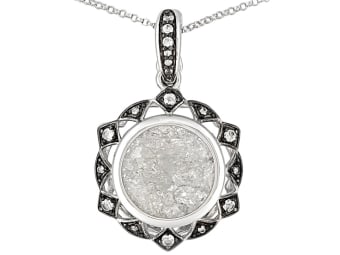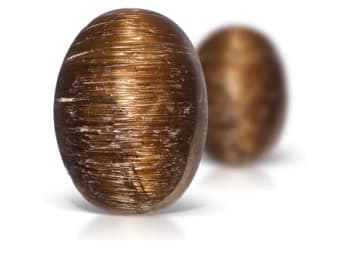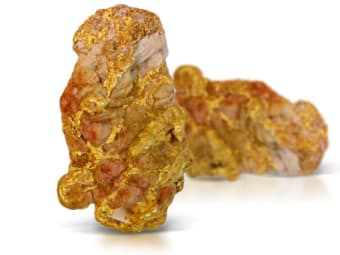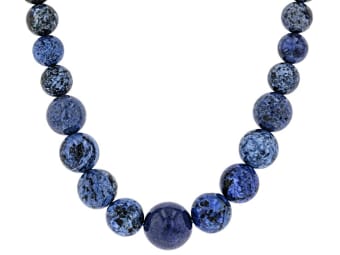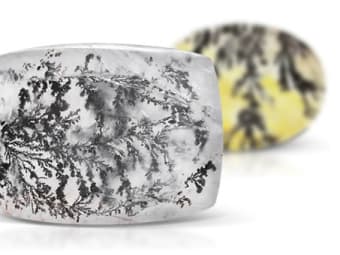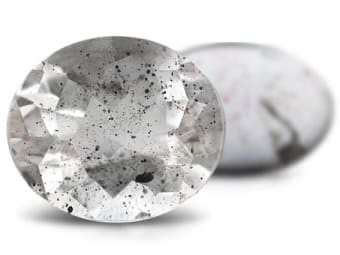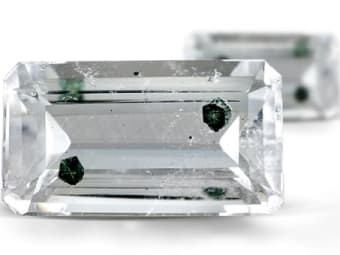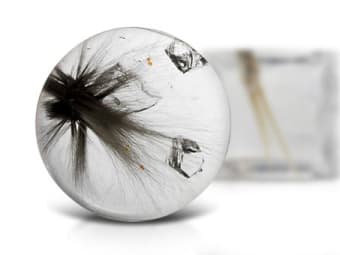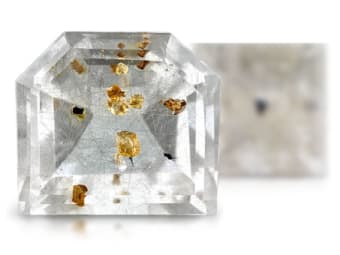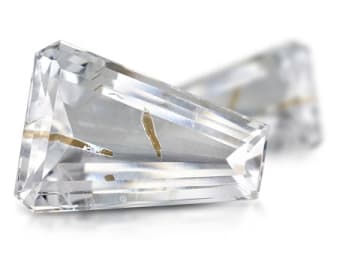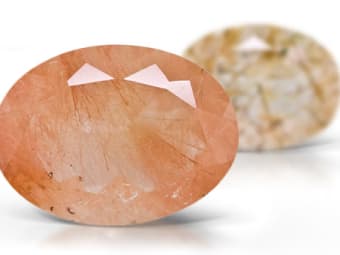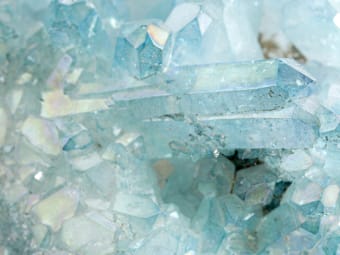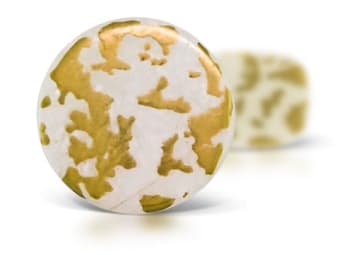Quartz is the name given to a large group of minerals comprised of silicon dioxide SiO2. Macrocrystalline quartz is quartz you can see with the naked eye. Amethyst, Citrine, and Smoky Quartz are Macrocrystalline. Quartz with microscopic crystals are called microcrystalline or cryptocrystalline. All varieties of chalcedony are microcrystalline quartz. Quartz is one of the more prevalent minerals in the earth’s crust and it can be found on all seven continents.
General Information
LWUV: Inert
Quartz Colors
-
 Bi-color
Bi-color -
 Black
Black -
 Blue
Blue -
 Brown
Brown -
 Colorless
Colorless -
 Gray
Gray -
 Green
Green -
 Green
Green -
 Multi-color
Multi-color -
 Orange
Orange -
 Pink
Pink -
 Purple
Purple -
 Red
Red -
 White
White -
 Yellow
Yellow -
 Yellow
Yellow
Quartz Spectra
We acknowledge the significant scientific contributions of John S Harris, FGA to the study of gemstone spectra and with deep appreciation to him, acknowledges the use of his images and related notes about gemstones and their spectra in the educational materials on this website.
Alternate Names
Rock crystal, Herkimer diamond, Rhinestone
Countries of Origin
Tanzania, United Republic Of; Afghanistan; Russian Federation; Cambodia; United States of America; Madagascar; Thailand; Mozambique; Pakistan; Korea (the Republic of); Morocco; Unknown; Malawi; China; Brazil; Bulgaria; Nigeria; Nepal; Argentina; Republic of Kosovo; Sri Lanka; Uruguay; Zambia; Bolivia (Plurinational State of); India; Spain; Canada; Turkey; Norway; Namibia; Dominican Republic; Italy; Mexico; South Africa; Australia; Peru; Germany
History
Because quartz crystals can vibrate at precise frequencies it is used in watches, radios and computers. Ultra-pure silica sand is used to manufacture glass.
Care
Normal care for untreated stones. Avoid jewelers torch for amethyst, citrine and prasiolite. Coated stones use gentle care. Avoid abrasions. Chipping may reveal natural color. Cannot be re-cut or re-polished. Avoid heat, temperature changes, steaming, chemicals, ultrasonic cleaners, and re-polishing in dyed or assembled stones.
Species/Variety
Blue Moon Quartz
This name refers to quartz gems naturally included with tiny carbon dioxide or water molecule inclusions. These miniscule blue inclusions give colorless quartz a "mysterious" blue sheen.
Milky Quartz
Milky quartz is a translucent to opaque white to light gray variety of quartz. It is not commonly used as a gemstone, but is commonly sold as mineral specimens.
Rock Crystal
Rock Crystal Quartz is the colorless, transparent variety of Quartz. The origin of the term Rhinestone refers to the Rock Crystal Quartz that was mined from the Rhine river in Europe and fashioned into gemstones.
Creation Classification
Lab Created
Synthetic quartz is created by a process called hydrothermal growth. Hydrothermally grown synthetic gems crystallize slowly out of a solution (a mix of water and dissolved elements) that has been exposed to heat and pressure similar to the conditions on Earth under which the natural gem mineral grows. Synthetic gems have the same chemical, optical, and physical properties of their natural counterparts, but are a more cost-effective alternative to a natural gem.
Optical Phenomena
Iris Quartz
This unique variety of quartz displays phenomenal iridescence. Its beautiful rainbow of color is caused by reflection and refraction of light within the tiny parallel crystal layers within its structure due to twinning. Fittingly, it is also called "aurora quartz," "iridescent quartz" or "rainbow quartz." Iridescence can also be induced by causing cracks within the stone by heating quartz and then placing it in cold liquid.
Star Quartz
Star quartz exhibits the optical phenomenon called asterism, a star-like pattern created on the surface of a gemstone when light encounters parallel fibrous, or needle-like, inclusions within its crystal structure. Light that strikes the inclusions within the gem reflects off of the inclusions, creating a narrow band of light. When two or more intersecting bands appear, a star pattern is formed. Depending on the crystal, the star may have four, six, or even twelve rays.
LWUV: Inert to weak purple
Cat's Eye
The term cat's eye, or chatoyancy, is used to describe a phenomenal optical property in gemstones, in this case quartz gems. The effect, when present, appears as a bright, narrow slit similar to the pupils in the eyes of your favorite feline. This phenomenon is caused by parallel fibrous or needle-like inclusions that interfere with the passage of light throughout the crystal, scattering and reflecting light back to the viewer as a thin line.
Inclusions
Gold Quartz
The term gold quartz refers to milky quartz that contains native gold inclusions.
Dumortierite In Quartz
Named for the 19th century French paleontologist Eugene Dumortier, dumortierite crystals are intensely colored and extremely scarce, making them highly prized by mineral collectors. Frequently, dumortierite grows as inclusions within quartz, occurring as an abundance of tiny blue specks, so much as to make the gem appear blue. Other dumortierite colors include pink, purple, pink, reddish brown to brown.
Dendritic Quartz
This agate variety is termed "dendritic" due to its internal collection of dendrites. Dendrites are fern-like inclusions of iron, manganese, or other metallic oxides that create bold patterns within the gem. Typically, dendritic agates are cut into slabs to best exhibit nature's artwork. As you might guess, these pieces are one-of-a-kind, as no two dendritic patterns are the same. The internal dendrites may appear black, dark gray, brown or green and, in rare instances, even red.
Covellite In Quartz
The mineral covellite, typically indigo blue to dark blue in color, often displays iridescence that is purplish to deep red. When present in quartz, it exhibits a glittering appearance not soon forgotten. Covellite was named in honor of Niccolo Covelli, an Italian mineralogist who discovered the mineral at Mount Vesuvius.
Conundrum Quartz
While rock crystal quartz is easily identifiable, conundrum quartz is called so because it contains a mysterious blend of up to 7 different types of mineral inclusions. Looking into this crystal, you may think that you're taking in a view from outer space! These unique gems are a treat to collectors with their varied, sundry mix of mineral inclusions creating a completely different look for each stone. Take a loupe or microscope to these gems, and explore the confounding menagerie within.
Cleavelandite In Quartz
This white lamellar variety of albite forms extremely thin, platy crystals that are only fractions of millimeters to a few millimeters thick. Cleavelandite was named in honor of 19th century American professor of geology and mineralogy, Parker Cleaveland.
LWUV: Inclusions: White
Chlorite In Quartz
When chlorite occurs as an inclusion within quartz, it gives the gem a green color and may cause phantom growths, seen as ghost-like layers of crystal left behind as the crystal grew in stages.
Brookite In Quartz
Brookite is a polymorph to rutile and anatase, meaning it shares the same chemical properties, but crystallizes differently. It is occasionally found included within quartz as a red to brown colored crystal.
Anatase In Quartz
Anatase is a relatively uncommon gemmy form of titanium dioxide that forms very small unique crystals. The name anatase comes from a Greek word meaning "elongation," referencing its elongated crystal form. Anatase is a polymorph to the more common rutile, as well as brookite. We sometimes see long rutile needles shooting through gemstones, but small anatase crystal inclusions are a much rarer occurrence. Like rutile, anatase usually occurs in honey-yellow, brown to reddish brown, black or deep blue colors.
Pyrite In Quartz
One of the most unique quartz varieties is a gorgeous crystal quartz that has the mineral pyrite encapsulated within its confines. Small pyrite crystals seem to float weightlessly in this crystal formation, creating an extremely unique appearance.
Positive Quartz
Positive quartz is a name for quartz that has smaller quartz crystal inclusions trapped inside it. Positive quartz is a play on the term "negative crystal," referring to small, crystal-shaped voids within some gems.
Petroleum Quartz
The original discovery of these quartz crystals in 2004 was so unusual that it was actually documented in a major industry publication. Each specimen contains three types of inclusions: oil, gas and water. The yellow that you see is petroleum, the gas bubbles are primarily methane and the colorless inclusions are water that was incapable of mixing with another component. Such unique inclusions are exciting enough for rock hounds across the globe, but when you add in the fact that the crystals are doubly terminated like Herkimer quartz, you have a combination of attributes that simply can't be ignored by enthusiasts.
Medusa Quartz
This unusual name refers to equally unusual inclusions within this crystal. Medusa quartz is host to beautiful radial tufts of blue to green gilalite. The umbrella-like formations were named for their uncanny resemblance to the medusa jellyfish.
Lithiophilite In Quartz
Lithiophilite is a very scarce phosphate mineral. When present in crystal quartz, its pinkish to brown crystals make a colorful display prized by mineral collectors.
Strawberry Quartz
Strawberry quartz is so named because it has a sufficient number of red hematite inclusions to cause a perceived pinkish to reddish body color. While red hematite ribbons are the primary inclusions in strawberry quartz, some gems also contain numerous colorless fluid inclusions and negative crystals, which only add to their desirability and collectability. Mother Nature needed no assistance when creating these beauties and all are 100% natural with no enhancements necessary!
Sagenitic Quartz
The term "sagenitic" is applied to quartz that contains a radiating mass of needle-like crystal inclusions of other minerals. Such minerals are commonly rutile, tourmaline, actinolite or goethite. While gemstones are usually prized for having no inclusions, sagenitic quartz specimens are treasured for their artistic, one-of-a-kind beauty, which make a beautiful display in a gem collection or jewelry pieces.
Enhancement
Aqua Aura
Aqua aura quartz is quart that has been CVD coated with metal salts to give an iridescent appearance.
Goldenite Quartz
This unique gem begins as natural milky quartz, but is then treated to impregnate the stone's surface with a high karatage of gold. This results in a distinctively patterned, one-of-a-kind gem.
Lemon Quartz
Named for its refreshing and invigorating yellow color, the strong citrus tones of lemon quartz exhibit radiant beauty, particularly when light dances from its facets. Lemon quartz is created by irradiating quartz with cobalt-60 gamma rays at a very low dosage and then heating the material producing the bright greenish yellow color.
Quench-Crackled Dyed
For a single crystal to be dyed, it must first be fractured. To achieve this, the method of "quench crackling" combines two types of treatment to improve or alter a stone's appearance. The first step requires the rapid heating and cooling of the stone to create fractures in its surface. The second step is the application of colored dye that is infused under pressure. The dye seeps into the cracks of the crystal to distribute the color throughout the gem.


